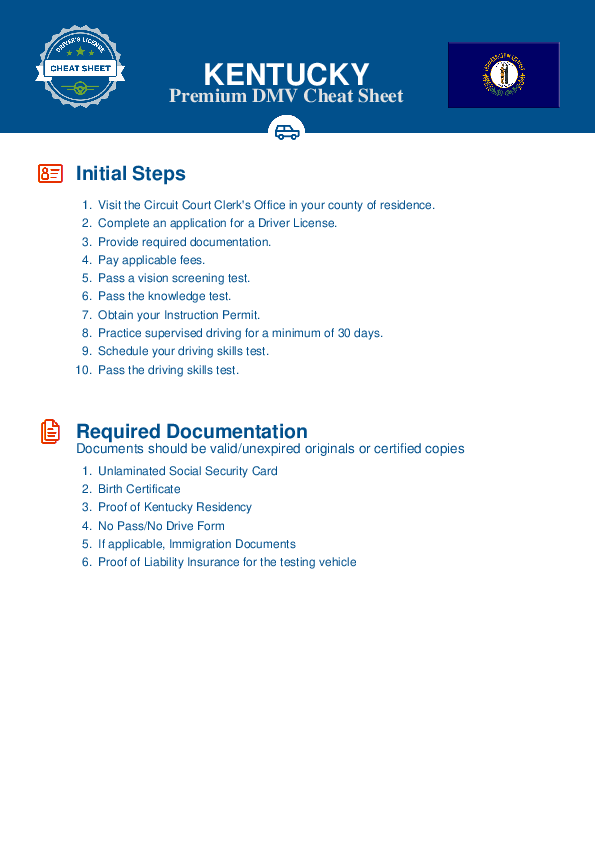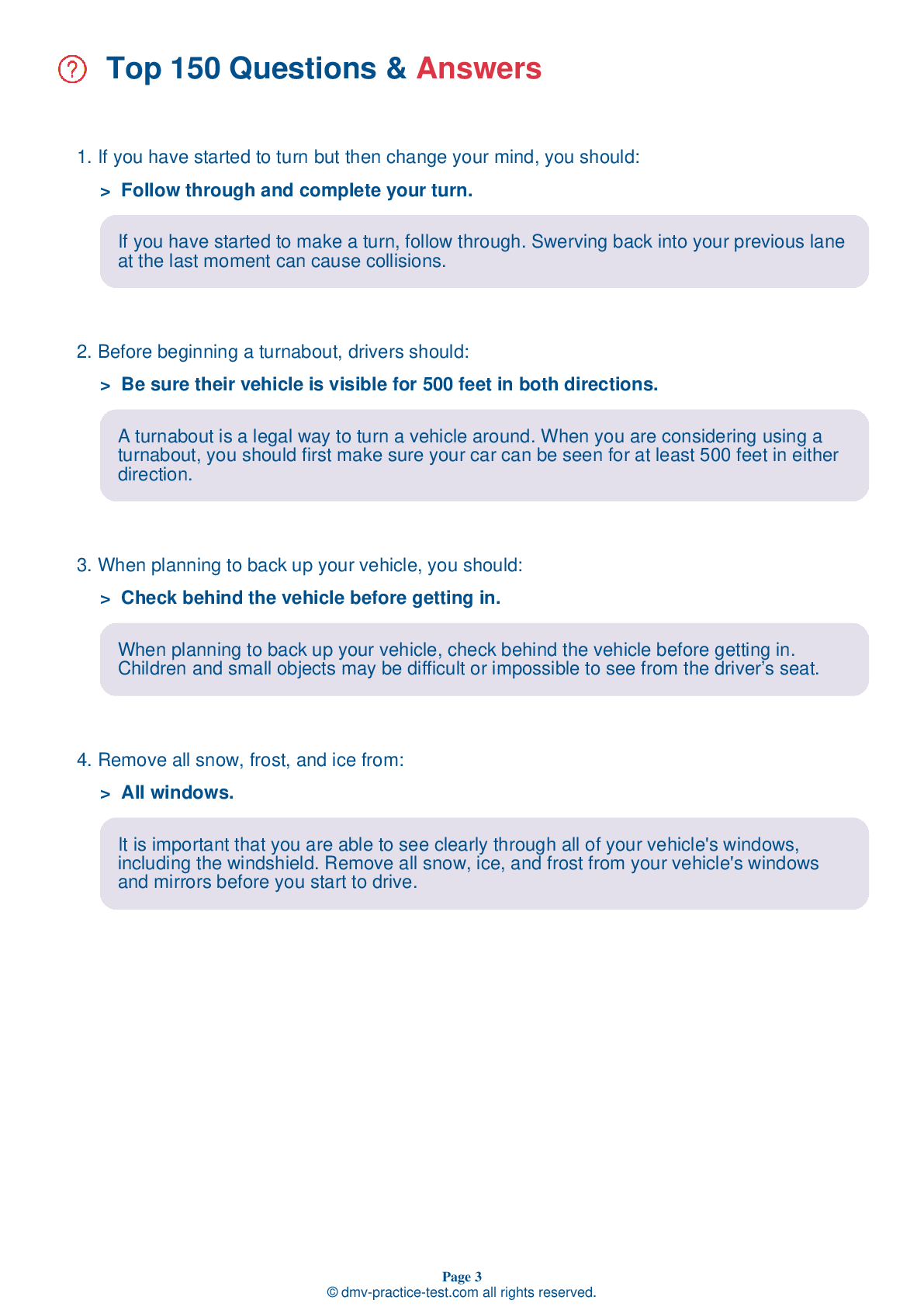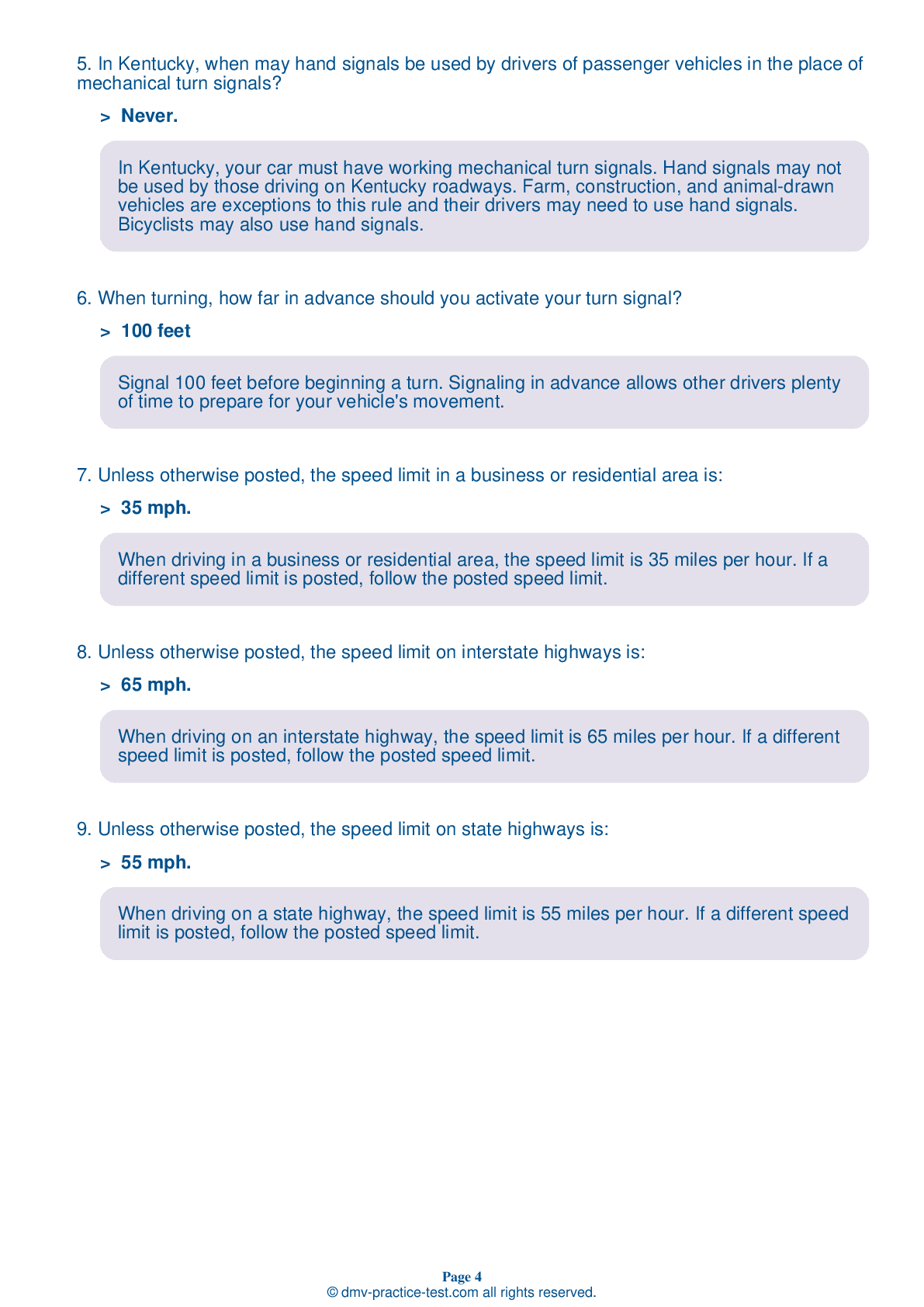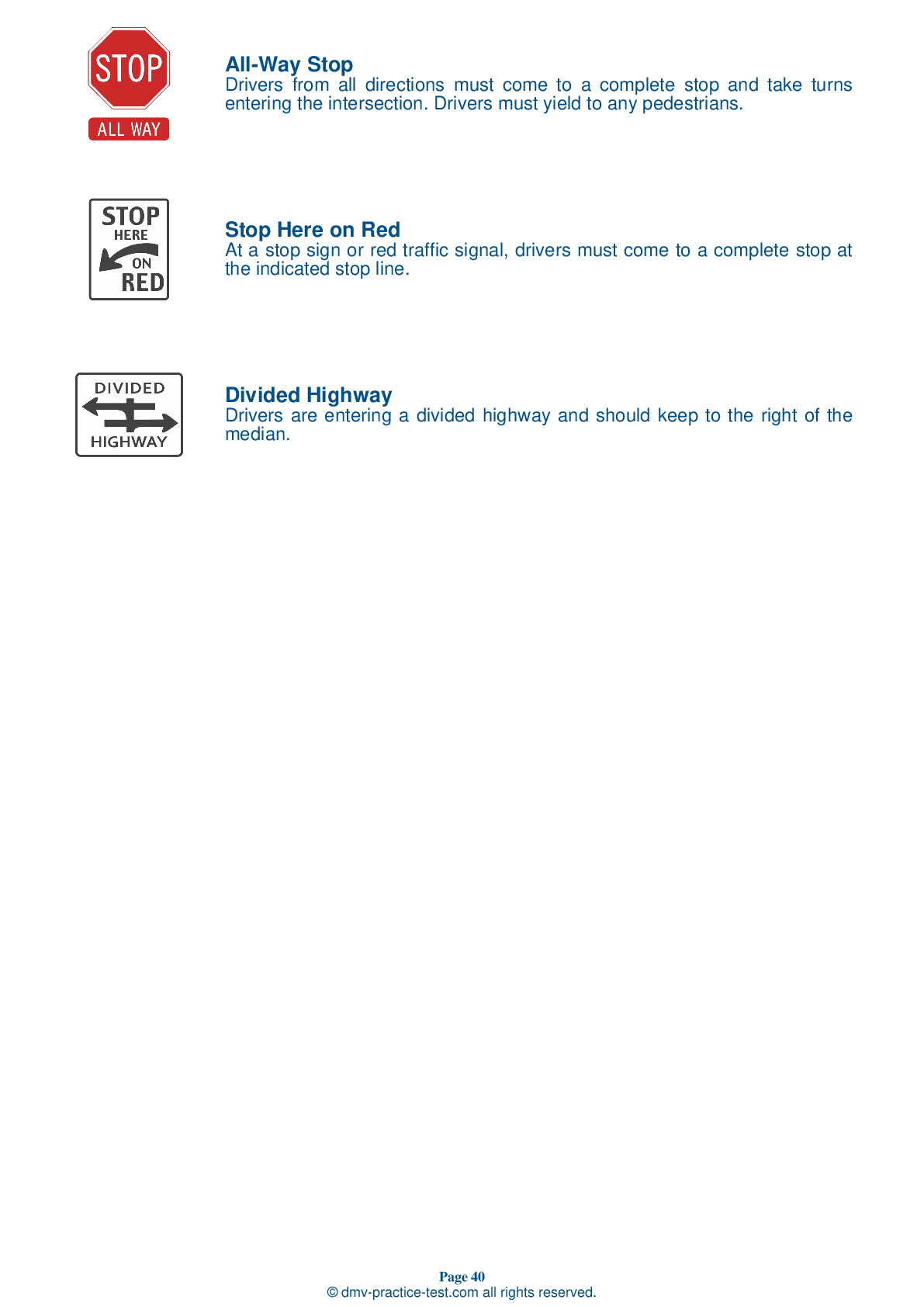FREE Kentucky DMV Practice Test #7 Page 5 of 5
The DMV practise tests in Kentucky have been updated for January 2026. It comprises questions based on the most important traffic signals and laws for 2026 from the KentuckyDriver Handbook. To study for the DMV driving permit test and driver's licence exam, use actual questions that are very similar (often identical!) to the DMV driving permit test and driver's licence exam.
Each question on the practise exam has a tip and explanation to help you recall the ideas. Questions about traffic rules, traffic signs, and driving statutes, as well as knowledge from the Driver Handbook, will be included in the written portion of the official Kentucky DMV test.
You must properly answer 32 of the 40 questions to receive a passing mark. To help you prepare for your Kentucky instruction permit or driver's licence, take our DMV practise test.
The DMV exam is offered in a variety of languages.
Using any form of testing help will result in an automatic fail, and the DMV may take further action against your driver's licence, so avoid it.
33 . This road sign means:
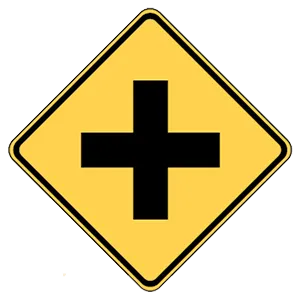
Warning signs provide notice to road users of a situation that might not be readily apparent and are usually yellow with black markings. This sign warns drivers of an upcoming intersection so they may prepare for potential traffic or prepare to turn.
34 . After passing a vehicle, it is safe to return to your driving lane when:
Before you return to your driving lane, be sure you are not dangerously close to the vehicle you have just passed. One way to do this is to look for the vehicle in your inside rearview mirror. When you can see both headlights in your rearview mirror, you may have enough room to return to your driving lane.
35 . You should not start across an intersection if you know you will block the intersection when the light turns red:
Even if the signal is green, you must not enter an intersection unless you can get completely across before the light turns red. If you block the intersection, you can be cited.
36 . When driving in fog, rain, or snow, use:
Low beam headlights should be used in fog, rain, and snow. The light from high beams will reflect back to the driver under these weather conditions, causing a glare that will make it difficult to see ahead.
37 . If the rear of your vehicle is skidding to the left, you should:
If you begin to skid on a wet or icy road, take your foot off the accelerator, stay off the brakes, and turn your steering wheel in the direction of the skid. However, if you have anti-lock brakes, you should apply your brakes firmly and steer straight ahead.
38 . You are driving on the freeway. The vehicle in front of you is a large truck. You should drive:
When you follow so closely behind a truck that you cannot see the truck driver’s side view mirrors, the trucker cannot see you and has no way of knowing you are there. Tailgating a truck, or any vehicle, is dangerous because you take away your own cushion of safety if the vehicle in front of you stops quickly.
39 . Before you enter an intersection, you should look to your:
Before you enter an intersection, look to both the left and right for approaching vehicles or crossing pedestrians. Look to your left a second time, as vehicle approaching from your left will be closer than those approaching from your right. Look across the intersection before you start to move to make sure the path is clear all the way through.
40 . When turning, how far in advance should you activate your turn signal?
Signal 100 feet before beginning a turn. Signaling in advance allows other drivers plenty of time to prepare for your vehicle's movement.
See the exact questions that will be on the 2026 Kentucky DMV exam.
99.2% of people who use the cheat sheet pass the FIRST TIME
LT gives us an insight on how the cheat sheet provided her with all the study questions she needed before taking her test.
Joe initially studied with the handbook and failed his test, he eventually found us online, studied and pass his test the first time around.
